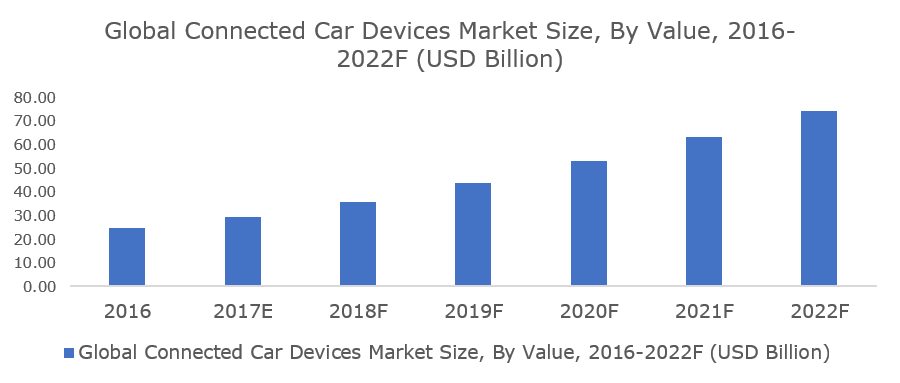Automotive Electronic Brake Force Distribution System- An Intelligent Braking System
The Electronic brake force distribution framework augments the adequacy of the brakes by enabling the back brakes to supply a more significant extent of the braking power. Basically, the system is a fundamental part of the ABS system. At the point when the EBD framework is working, you may hear a blathering noise or feel a slight vibration in the brake pedal. This is ordinary and does not show a breakdown. The safety and administrative equipment utilized by an electronic brake force distribution framework is much the same as the equipment utilized by anti-braking system without EBD.
The system makes use of the components like yaw sensors, speed sensors, electronic control unit (ECU), brake force modulators, steering wheel angle sensors.
Global Automotive Electronic Brake Force Distribution (EBD) System Market is projected to grow at a CAGR of over 9% over the next five years backed by increasing technological advancements, increasing vehicle production and mandates on implications of electronic brake systems in many countries.
Major players operating in automotive electronic brake force distribution systems are Continental, Robert Bosch GmbH, Delphi Automotive PLC, WABCO and Autoliv etc.
Why Electronic Brake Force Distribution System in Vehicles?
The purpose and use of Electronic Brake Force Distribution system is like that of the technologies like traction control and anti-lock brakes system. EBD prevents the wheels of a vehicle from locking, EBD can progressively adjust the brake drive that is connected to each wheel.
Globally, What Drives the Electronic Brake Force Distribution System Market?
- Growing Connecting Vehicle Technology:
Globally the connected vehicle technology is increasing, the demand for connected car devices in also increasing. The connected vehicles are pushing the demand for Anti-lock brake system with electronic brake force distribution system. Growth in the global connected car devices market is being underpinned by rapid technological innovations, garnering support from demand for vehicle safety, favourable regulation of different governments and incorporation of smart features in the vehicle. The dynamics in global connected car devices vary across countries, depending on the support provided by the underlying regulation and policies of respective country.
The increasing sale of connected vehicle devices is boosting the demand for automotive electronic brake force system market as well.

Source: Techsci Research
- Increasing Road Traffic Deaths
According to World Health Organization latest report statistics on 2015, globally, total number road accidents has reached at no change stage of 1.25 million per year. Among these 90% of the road accidents occurs in low and middle-income countries.
Electronic Brake Force Distribution is another vehicle innovation that guides in enhancing the security of the driver and travellers. Government of many countries have mandates rule for use of advance braking system technologies and asked OEM’s to manufacture vehicle with advance braking systems. The government took initiative to lower down the death rates on roads.
Government stringent regulations for vehicle and consumers safety on road will drive the global automotive electronic brake force distribution system market over the next five years.
What United States is doing for passenger and Vehicle Safety?
According to United States Department of Transportation, the motorcyclist deaths in comparison to other vehicles has occurred 27 times faster. In 2015, more than 35,000 people died in vehicle crashes. 94% of the crashes are due to errors and human choices.
According to Bureau of Transportation statistics, motorcycle weights and engine sizes are increasing due to growing demand from young population and National Highway Traffic Safety Administration of United States, is working continuously on promoting vehicle safety technologies to reduce the number of crashes.
Government of United States is taking necessary action to save lives and decrease the number of crashes and this will drive the demand of electronic brake force distribution system market.
Moreover, Growing Vehicles sales in the country will also drive the automotive electronic brake force distribution system market.

Source: OICA
Conclusion: Global Automotive Electronic Brake Force Distribution (EBD) System Market is projected to grow at a CAGR of over 9% during the forecast period backed on increasing technological advancements, increasing vehicle production and mandates on implications of electronic brake systems. Growing safety concerns worldwide majorly drives the electronic brake force distribution system market globally.Source: OICA



